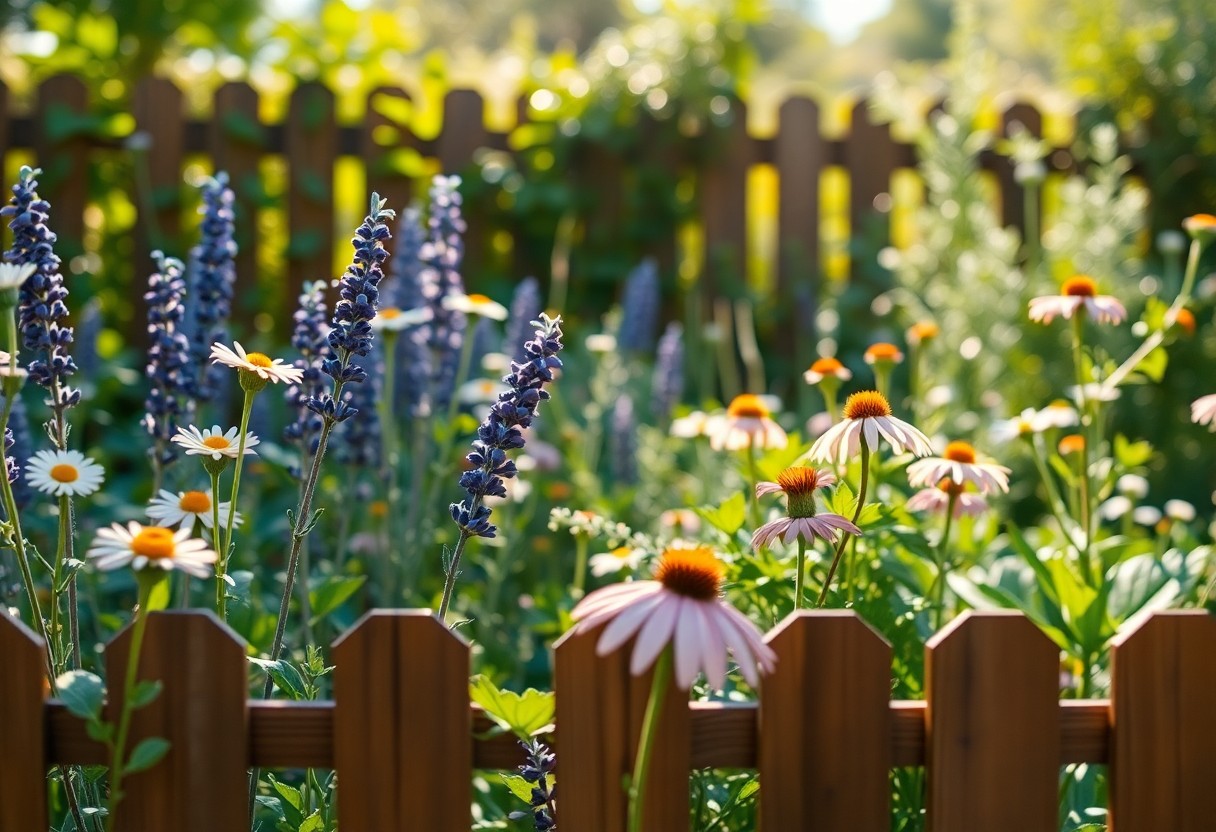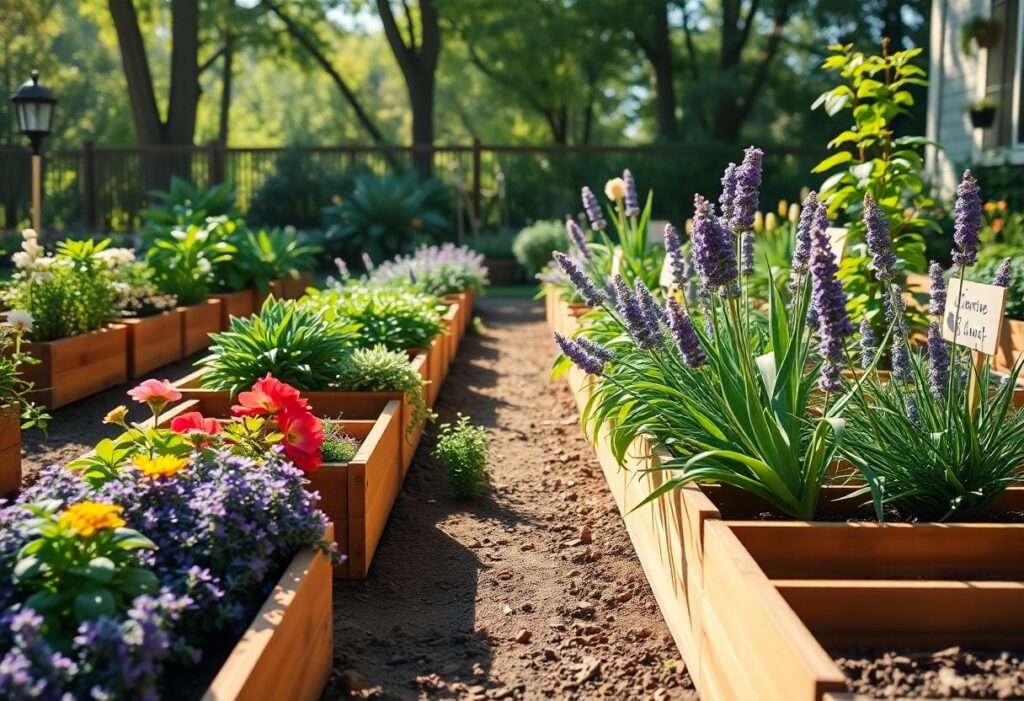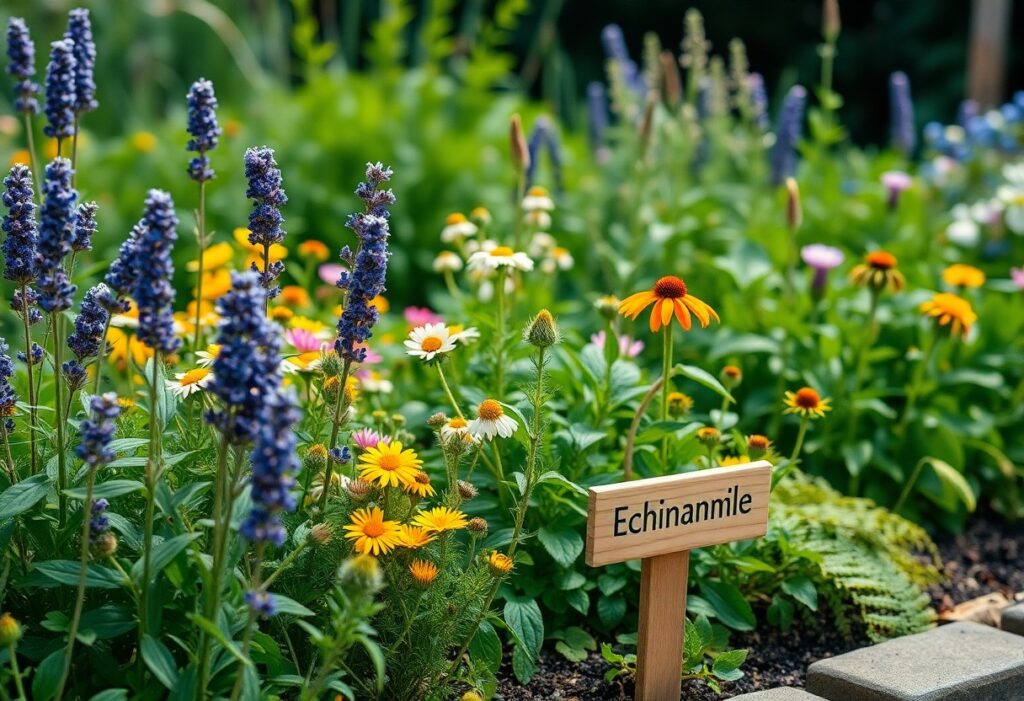Herbalism offers you a powerful way to enhance your well-being through a medicinal garden, where you can cultivate plants that support your health naturally. By integrating healing herbs into your gardening practice, you can reduce your reliance on pharmaceuticals while promoting sustainability. This blog post will guide you through the crucial steps to create your own medicinal garden, enabling you to grow healing plants that have been valued for their properties for centuries. Discover how nurturing these plants can empower you to take control of your health and contribute to a greener planet.
The Importance of Medicinal Gardens
While modern medicine has made remarkable strides in recent decades, the significance of medicinal gardens remains an enduring legacy, offering an organic and holistic approach to health. These gardens not only provide a range of plants that can be used for healing and sustenance but also promote biodiversity and environmental well-being. By cultivating a medicinal garden, you engage in a practice that connects you with the rhythms of nature, allowing you to harness the healing properties of plants while fostering a sustainable ecosystem that benefits your local environment.
Medicinal gardens represent an invaluable resource for your physical and mental well-being. They offer you the opportunity to grow your own remedies, enhancing your knowledge of herbal medicine while reducing reliance on pharmaceuticals. This practice serves as a powerful reminder of the connection between land, plants, and health, empowering you to take charge of your wellness journey.
Historical Significance
One cannot overlook the historical significance of medicinal gardens, as they served as the foundation for health care in ancient civilizations. From the earliest apothecaries to the apothecal gardens of medieval Europe, these curated spaces provided individuals with the means to access medicinal plants vital for their health. You can trace the roots of modern pharmacology back to these gardens, where botanists and herbalists recognized the importance of specific plants in treating various ailments. By understanding this rich history, you can appreciate the profound relationship humans have maintained with plants for centuries.
The cultivation of medicinal gardens has persisted through time, continuously adapting to the needs of society and the discoveries in herbal medicine. As you examine into the historical significance, consider how your own garden can reflect these ancient practices while honoring traditional knowledge passed down through generations. By doing so, you create a living legacy that connects you to a long lineage of healing practices.
Cultural Perspectives
Around the world, different cultures have embraced the concept of medicinal gardens, reflecting their unique relationships with nature and health. You may find that in many Indigenous cultures, traditional medicine involves the meticulous cultivation of native plants, each chosen for their specific healing properties and spiritual significance. Similarly, in various Asian cultures, such as Traditional Chinese Medicine, gardens are designed with purposeful arrangements that align with holistic philosophies, emphasizing balance and harmony. By exploring these cultural perspectives, you can gain insights into the diverse healing traditions that exist globally.
Cultural views on medicinal gardens often intertwine practical use with spiritual significance. In many societies, growing medicinal plants is not just about the utility of these herbs but also involves a deeper connection to the land and an appreciation for the natural world. By adopting aspects of these cultural practices, you can foster a greater understanding of the role that other cultures play in shaping how we view health and wellness. In your own medicinal garden, consider integrating plants with meaningful symbolism or traditional uses to enhance your connection to this global heritage.

Key Medicinal Plants to Consider
Any medicinal garden should prioritize plants that have been widely recognized for their therapeutic properties. Incorporating a mix of common herbs and native plants can empower you to create a sustainable garden that not only promotes personal health but also contributes to local biodiversity. Some necessary medicinal plants include lavender for relaxation, peppermint for digestive health, and echinacea for immune support. By growing these plants yourself, you gain access to high-quality remedies while also cultivating an intimate relationship with nature.
Common Herbs and Their Uses
With common herbs like basil, rosemary, and thyme, your garden can serve both culinary and medicinal purposes. Basil is known for its anti-inflammatory properties, while rosemary can enhance memory and concentration. Thyme, on the other hand, is not only flavorful but also possesses antibacterial qualities that make it an excellent addition to your natural health toolkit. Utilizing these herbs in your daily life can enhance your wellness routine while providing you with natural alternatives to pharmaceuticals.
Native Plants for Local Sustainability
Along with common herbs, incorporating native plants into your medicinal garden is vital for fostering local ecosystems. Native plants are adapted to your specific climate and soil conditions, making them easier to cultivate and maintain. Plants like echinacea, goldenrod, and meadowsweet not only provide medicinal benefits but also attract beneficial insects and pollinators, supporting a healthy garden environment. By focusing on native species, you can create a self-sustaining ecosystem that thrives in harmony with local wildlife.
Consider the benefits of using native plants that are well-suited to your region’s climate and soil type. These plants often require less water and maintenance compared to non-native species and can make a significant impact on local fauna, including birds and pollinators. By choosing to plant native medicinal species, you support biodiversity and also have the opportunity to harvest plants that have long been used in traditional healing practices. This thoughtful approach not only benefits your health but also contributes to the ecological integrity of your surroundings.

Designing a Sustainable Medicinal Garden
After establishing the goals of your medicinal garden, the next step involves thoughtful design that maximizes both utility and enjoyment. You should consider the layout carefully; a well-planned garden can enhance accessibility and biodiversity while facilitating your gardening efforts. Think about the sun exposure, as many medicinal plants thrive in full sun, while others may flourish in partial shade. Create pathways that allow easy movement between different sections and encourage a natural flow. Implementing raised beds can also be an effective strategy as they reduce soil compaction and improve drainage, allowing you to cultivate various plants close together without risking overwatering.
Layout and Planning
Below, you’ll find several key factors to incorporate into your layout and planning process. Start by zoning your garden; group plants with similar watering and light needs together. This method not only saves water but also aids in pest management by creating a healthier ecosystem. Additionally, don’t underestimate the value of companion planting. Certain plants can deter pests or enhance growth when planted in close proximity to one another. You might find this technique particularly beneficial for enhancing the potency of your medicinal herbs, creating a synergistic effect that supports your health practices.
Soil Health and Biodiversity
About your medicinal garden, you should prioritize soil health and biodiversity. Healthy soil is the foundation for vibrant plant life, and it provides a rich environment for the microorganisms that are imperative for nutrient uptake. Incorporating organic materials such as compost helps improve soil structure and water retention while fostering beneficial relationships between soil organisms and your plants. Furthermore, maintaining diverse plant species within your garden can promote ecological stability. By ensuring a variety of plants, you create habitats for pollinators and natural pest predators, which can contribute to a more resilient growing environment.
The implementation of crop rotation and cover cropping can also enhance soil health over time. These practices not only prevent nutrient depletion but also reduce the risk of soil degradation. Additionally, avoiding chemical fertilizers and pesticides ensures that the biodiversity in your garden thrives, which is imperative for the long-term sustainability of your medicinal garden. As you cultivate this environment, you foster a harmonious relationship between yourself, your plants, and the surrounding ecosystems, ultimately enhancing your health and the wellbeing of your garden.
Cultivation Techniques for Success
Unlike traditional gardening practices that often rely on chemical fertilizers and pesticides, cultivating a medicinal garden for sustainable health emphasizes a balance with nature. When you adopt the right techniques and approach, you can grow a vibrant variety of medicinal plants that thrive in harmony with their environment. You’ll want to take into consideration the unique growing conditions of each plant, such as soil type, light requirements, and moisture levels. Implementing companion planting can also foster healthy interactions between plants, deterring pests naturally while promoting growth and maximizing your garden’s production.
Organic Practices
About 90% of successful medicinal gardeners employ organic practices in their cultivation methods. By opting for organic seeds and plants, you ensure that your garden begins free from harmful chemicals and genetic modifications. You can enrich your soil using compost or natural fertilizers derived from organic materials. In this way, your medicinal plants not only benefit from vital nutrients but also develop resilience against diseases and pests, leading to healthier growth. This practice aligns perfectly with sustainable health, as it promotes both your well-being and that of the ecosystem.
Pest Management Strategies
By implementing effective pest management strategies, you create an environment where your medicinal garden can flourish without the heavy dependency on synthetic chemicals. Utilizing natural deterrents, such as neem oil or insecticidal soap, ensures that pests are managed without harming beneficial insects that aid pollination and plant health. Additionally, introducing predatory insects like ladybugs can help maintain balance within your garden’s ecosystem, providing a sustainable solution to pest problems.
Success in pest management often hinges on the combination of preventative measures and tactical interventions. Keeping your garden clean by removing debris and wilting plants is crucial, as this can harbor pests and diseases. Crop rotation, as well as providing diverse plant species, can also deter specific pests that are drawn to monoculture plantings. By enhancing your knowledge of plant-pest relationships and employing holistic strategies, your medicinal garden can thrive sustainably while minimizing disruption to the surrounding environment.
Integrating the Medicinal Garden into Community Health
For many communities, integrating a medicinal garden can transform public health strategies. By creating spaces where individuals can cultivate and learn about healing plants, you not only promote biodiversity but also establish a practical resource for health. These gardens can be designed to include native healing plants, which often carry significant cultural importance, allowing you to reconnect with nature and traditional healing practices. Moreover, including workshops and resources in these gardens can educate your community about herbal remedies, encouraging a holistic approach to health that complements conventional medicine.
Educational Initiatives
After establishing a medicinal garden, it’s imperative to implement educational initiatives that empower you and your community members with the knowledge needed to utilize these medicinal resources effectively. Workshops led by herbalists or local health practitioners can provide insights into identifying and using various plants for common ailments. As you engage with these initiatives, you will learn about the properties of individual herbs and how they can play a role in your everyday wellness routines. This kind of knowledge fosters a sense of ownership and responsibility regarding health, inspiring you to make informed choices.
Community Engagement
Besides educational aspects, fostering community engagement around medicinal gardens enhances their effectiveness in promoting health. You can organize events such as community planting days or health fairs, where residents can participate actively in the gardening process and learn about how to utilize the plants in their own lives. When you involve various community members, from children to elders, the garden becomes a shared space for connection, learning, and collective healing, strengthening community bonds.
Consequently, community engagement enriches the experience of the medicinal garden, turning it into a vibrant hub of activity and education. As you participate in communal efforts, you develop relationships that can lead to collaborative health initiatives, such as support groups focused on wellness or shared cooking classes that highlight the use of medicinal plants. This not only reinforces community ties but also creates a network of support that contributes to the overall health of everyone involved, establishing a resilient, knowledgeable community dedicated to sustainable health practices.
Harvesting and Preserving Medicinal Plants
Not all harvesting methods are created equal, and using the best practices not only ensures the health of your medicinal plants but also maximizes their effectiveness. You should aim to harvest plants at their peak potency, which typically occurs just before they flower. It’s advisable to use clean, sharp tools to minimize damage to the plant and to always harvest from areas that haven’t been treated with pesticides or chemicals. You should also never take more than a third of any plant at a time, allowing it time to recover and continue thriving for future harvests.
Best Practices for Harvesting
Below are some helpful tips for effective harvesting. When harvesting leaves, gather them in the early morning when they are most fragrant and full of important oils. For roots and barks, it’s best to dig or cut them during the dormant season to avoid harming the plant’s ability to regenerate. Keeping your harvested materials cool and out of direct sunlight will prevent deterioration and loss of medicinal properties. Maintain a clean harvesting area and tools to avoid contamination, further enhancing the quality of your medicinal preparations.
Methods of Preservation
Practices for preserving medicinal plants vary, depending on the type of plant and the desired use. Drying is one of the most common methods, where you can hang bundles of herbs in a dark, dry place with good airflow. Alternatively, you may choose to use a dehydrator for a quicker drying process. For liquids, tinctures made by steeping herbs in alcohol or vinegar provide a concentrated extract that can be stored for years. Always label your preserved plants with the date and type to keep track of freshness and efficacy.
Methods of preservation can significantly impact the benefits medicinal plants offer. In addition to drying and tincture-making, you can also explore freezing as a means to retain the potency of fresh herbs. For example, fresh leaves can be chopped and packed into ice cube trays, then covered with water or oil. This method allows easy access to your herbs while preserving their important oils and active compounds. It’s beneficial to experiment with various methods to discover what works best for your unique collection of plants and your intended applications.
Summing up
From above, it is clear that creating a medicinal garden for sustainable health is an empowering endeavor that you can undertake in your own backyard. By selecting plants with known health benefits, you can cultivate an environment that not only nourishes your body but also enriches your well-being. Engaging with nature in this way allows you to harness the power of herbal remedies, providing you with easy access to natural treatments while also reinforcing your connection to the environment.
Moreover, establishing a medicinal garden enables you to promote sustainable practices, such as reducing dependence on commercial pharmaceuticals and minimizing your ecological footprint. As you embrace the art of growing your own medicine, you may find that this not only enhances your physical health but also contributes to mental and emotional wellness. Your medicinal garden serves as a sanctuary that fosters resilience, teaches you about the healing properties of plants, and ultimately inspires a holistic approach to health that can benefit both you and your community.
FAQ
Q: What is a Medicinal Garden for Sustainable Health?
A: A Medicinal Garden for Sustainable Health is a dedicated space designed to grow plants that have therapeutic properties. These gardens focus on cultivating a diverse range of medicinal herbs and plants that can be used to promote health and well-being while encouraging sustainable gardening practices. The aim is to create a self-sufficient ecosystem where medicinal plants thrive alongside local flora and fauna, contributing to overall environmental health.
Q: What types of plants can be found in a Medicinal Garden?
A: A variety of plants can be included in a Medicinal Garden, such as herbs like basil, mint, lavender, and chamomile, as well as other plants like aloe vera, echinacea, and ginseng. These plants are chosen for their medicinal properties, which can help with issues ranging from digestive problems to skin ailments. The selection may vary based on local climate and conditions, ensuring that all plants can be sustainably grown in the region.
Q: How does a Medicinal Garden contribute to sustainable health?
A: A Medicinal Garden promotes sustainable health by providing natural alternatives to pharmaceuticals, reducing reliance on chemical treatments, and improving access to herbal remedies. It encourages biodiversity, which can enhance soil health and create habitats for beneficial insects. Moreover, such gardens help raise awareness about the importance of natural remedies and sustainable practices in improving individual and community health outcomes.
Q: Can beginners successfully create a Medicinal Garden?
A: Yes, beginners can absolutely create a Medicinal Garden. Starting small with a few hardy and easily cultivated plants is an excellent way to learn. Choosing native plants and those suited to the local climate can make maintenance easier. Additionally, there are many resources available, such as books, online courses, and local gardening groups, that can provide guidance and support throughout the gardening process.
Q: What are some sustainable practices to consider when maintaining a Medicinal Garden?
A: Maintaining a Medicinal Garden sustainably involves several practices, including using organic fertilizers, composting kitchen scraps, practicing crop rotation, and integrating companion planting. Avoiding chemical pesticides and herbicides helps maintain a healthy ecosystem. Water conservation methods, such as rainwater harvesting and drip irrigation, can also be employed. Finally, encouraging pollinators and beneficial insects through careful plant selection and habitat creation is necessary for the garden’s long-term health.


